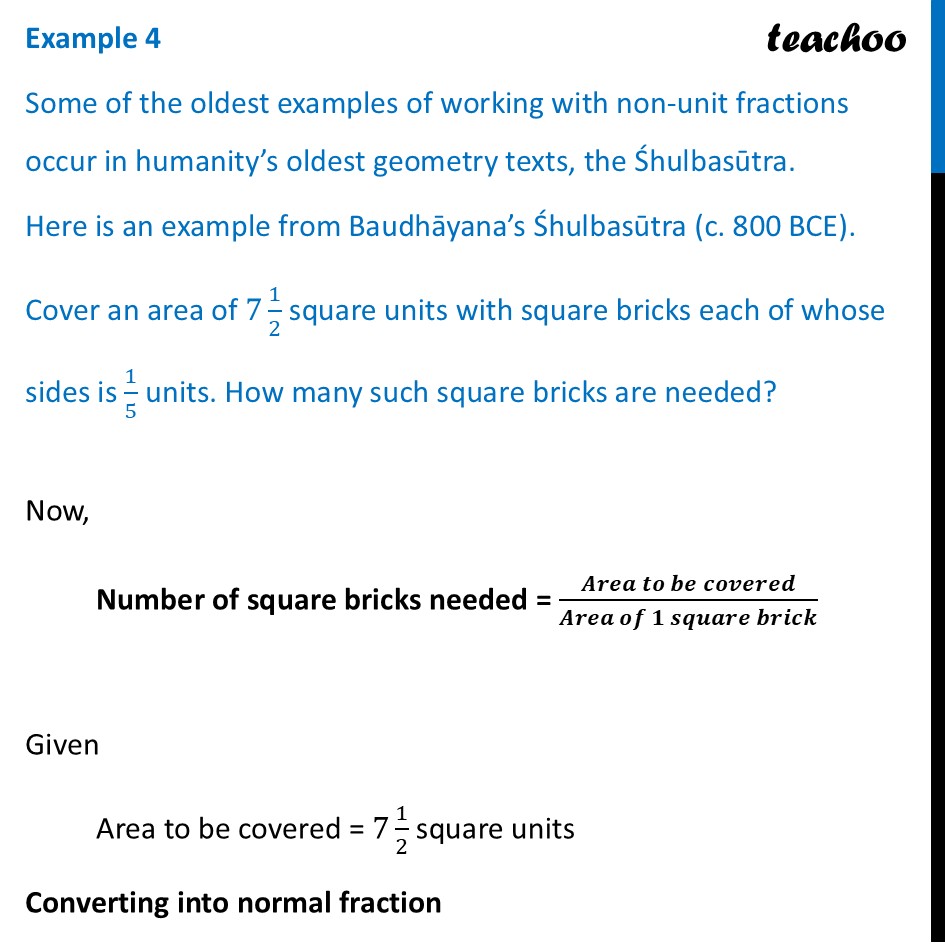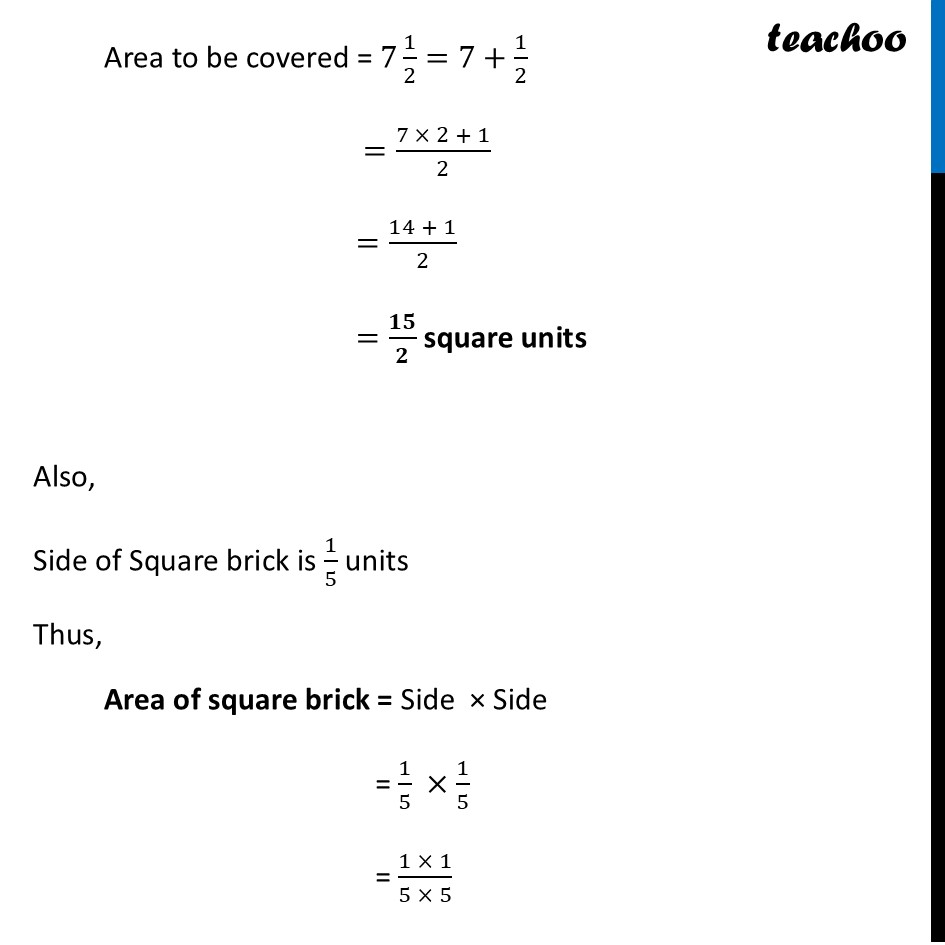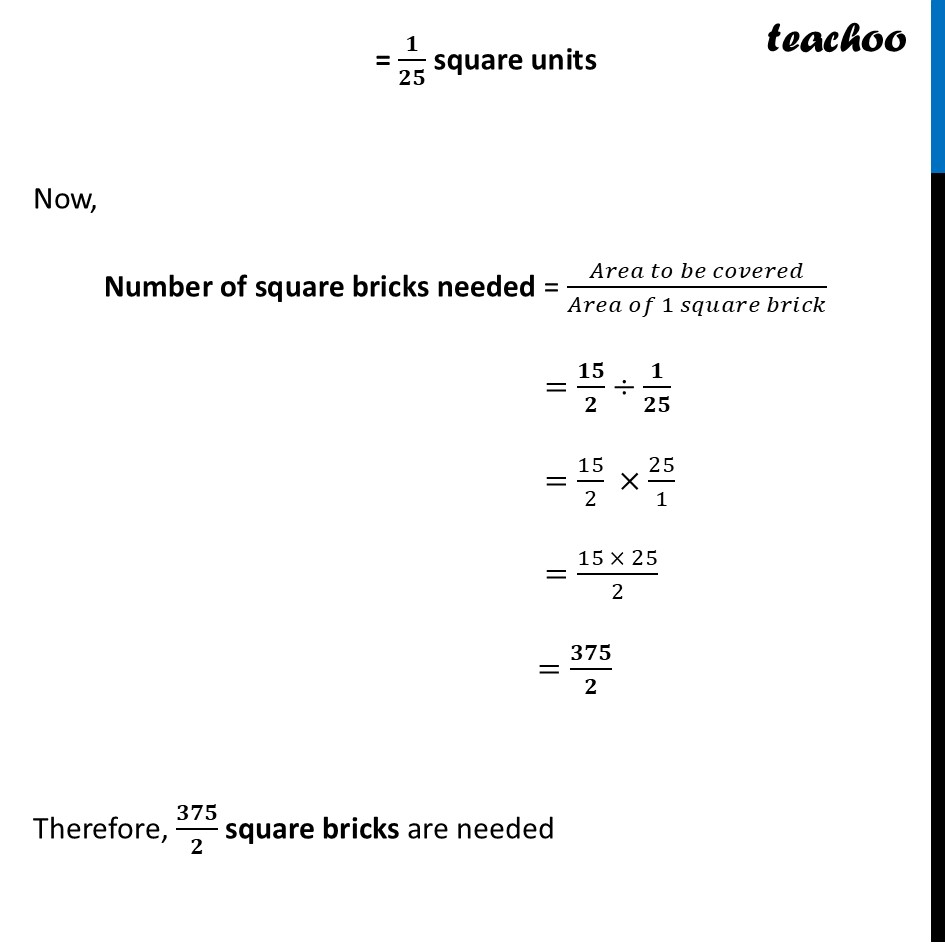


Some Problems Involving Fractions (Page 190, 191)
Some Problems Involving Fractions (Page 190, 191)
Last updated at October 6, 2025 by Teachoo



Transcript
Example 4 Some of the oldest examples of working with non-unit fractions occur in humanity’s oldest geometry texts, the Śhulbasūtra. Here is an example from Baudhāyana’s Śhulbasūtra (c. 800 BCE). Cover an area of 7 1/2 square units with square bricks each of whose sides is 1/5 units. How many such square bricks are needed? Now, Number of square bricks needed = (𝑨𝒓𝒆𝒂 𝒕𝒐 𝒃𝒆 𝒄𝒐𝒗𝒆𝒓𝒆𝒅)/(𝑨𝒓𝒆𝒂 𝒐𝒇 𝟏 𝒔𝒒𝒖𝒂𝒓𝒆 𝒃𝒓𝒊𝒄𝒌) Given Area to be covered = 7 1/2 square units Converting into normal fraction Area to be covered = 7 1/2=7+1/2 =(7 × 2 + 1)/2 =(14 + 1)/2 =𝟏𝟓/𝟐 square units Also, Side of Square brick is 1/5 units Thus, Area of square brick = Side × Side = 1/5 ×1/5 = (1 × 1)/(5 × 5) = 𝟏/𝟐𝟓 square units Now, Number of square bricks needed = (𝐴𝑟𝑒𝑎 𝑡𝑜 𝑏𝑒 𝑐𝑜𝑣𝑒𝑟𝑒𝑑)/(𝐴𝑟𝑒𝑎 𝑜𝑓 1 𝑠𝑞𝑢𝑎𝑟𝑒 𝑏𝑟𝑖𝑐𝑘) =𝟏𝟓/𝟐÷𝟏/𝟐𝟓 =15/2 ×25/1 =(15 × 25)/2 =𝟑𝟕𝟓/𝟐 Therefore, 𝟑𝟕𝟓/𝟐 square bricks are needed